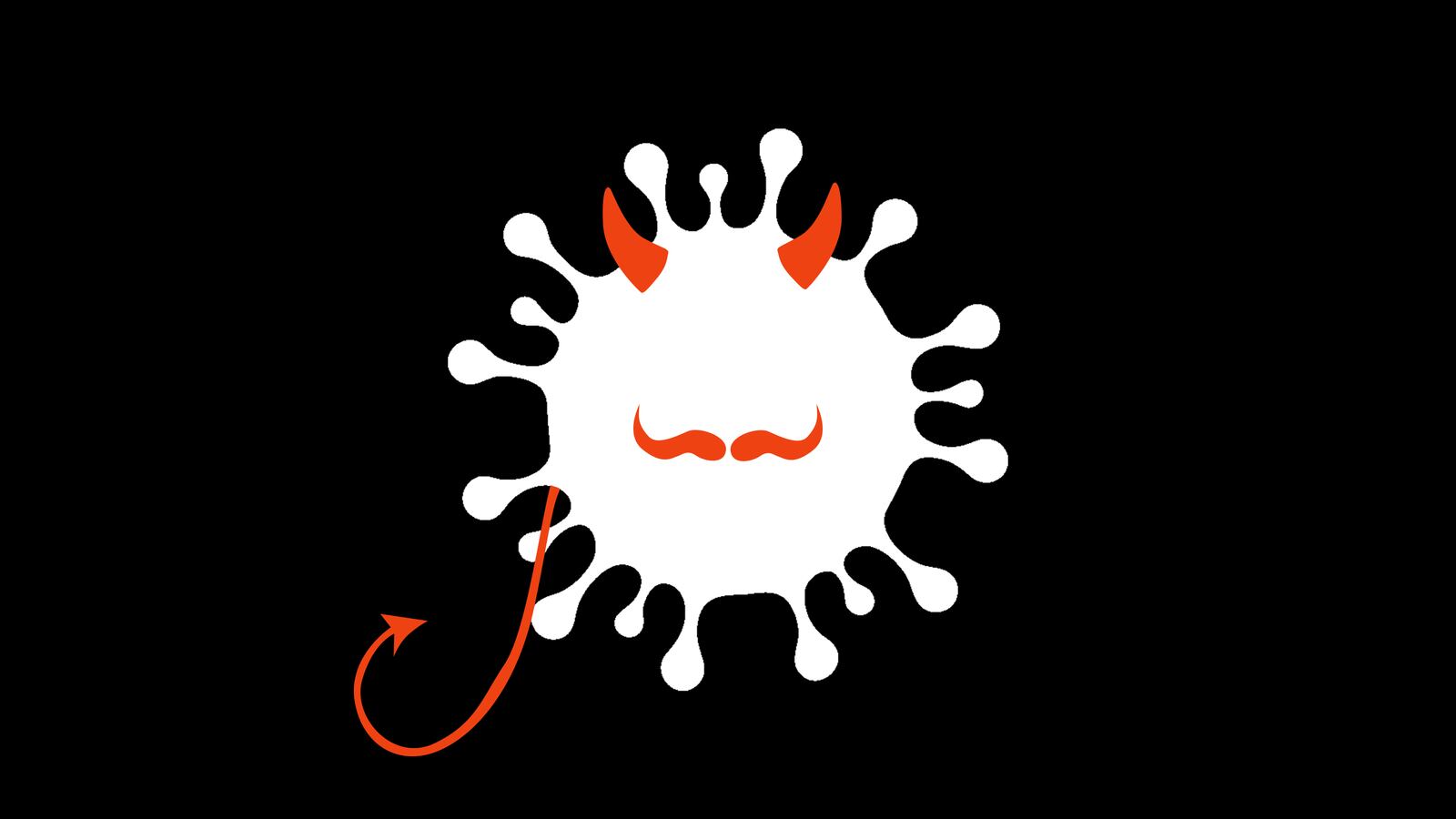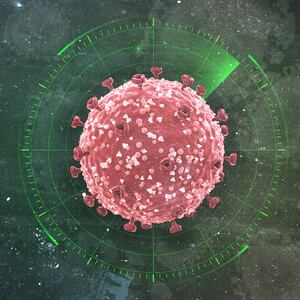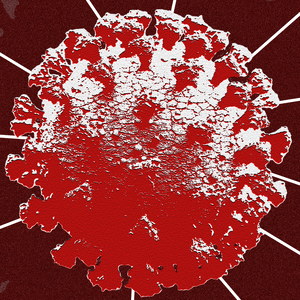A news story on a Boston University preprint has, predictably, sent right-wing pundits, politicians, and public health personalities into a tizzy over the possibility that government-funded research created a deadlier strain of COVID-19. Deadlier than what, though, ended up being the key question.
On Monday, The Daily Mail posted an inflammatory story about new, not yet peer-reviewed research in which BU scientists merged a gene from the Omicron variant into the backbone of a much earlier SARS-CoV-2 virus and infected mice. To the scientists who were interviewed, it seemed like the study represented “gain-of-function” research, defined by the Department of Health and Human Services as work that improves the ability of a pathogen to cause disease, either by enhancing its transmissibility (spread) or its pathogenicity (harm). After the article was posted, the usual suspects, like noted anti-vaxxer Robert F. Kennedy Jr., came out of the woodwork on Twitter to decry the research—but so did powerful politicians, including U.S. Senator Roger Marshall (R-KS) who on Thursday called for viral gain-of-function research to be halted “until proper guardrails can be put in place.”
As these public figures would know from reading the preprint, the researchers’ chimeric virus proved to be more fatal to mice than the original Omicron variant was. But it was still less fatal than the ancestral virus, which at one point was actively circulating in nature. Or, as Florian Krammer, a virologist at Icahn School of Medicine at Mount Sinai, put it on Twitter:
Since then, additional details have complicated the story. STAT News’ Helen Branswell reported that according to Ronald Corley, the director of the BU laboratory in question, the research was not paid for with government grant money. Some, including Corley, have also argued that the lab’s study does not constitute gain-of-function research because the resulting chimera was less dangerous than the ancestral, wild-type strain.
What’s gotten lost in the current brouhaha are the problems with the definition of gain-of-function research, and the risks associated with regulating “dangerous” science. In the minds of non-scientists (and a group of vocal but controversial scientists), gain-of-function research looms like a boogeyman, imminently threatening an accidental release of deadly pathogens and another pandemic. But the history of the debate and the reality of federally funded experiments reveal an entirely different state of affairs.
“People use the term gain of function like it’s a magic wand, like all of a sudden you wave this gain-of-function thing and you get the most dangerous virus,” Gigi Gronvall, a public health researcher at Johns Hopkins University, told The Daily Beast. “Things freak you out if you abstract them enough, but when you contextualize the work and add more scientific details, in this case, it makes it less alarming.”
Secret Origins
In 2015, gain-of-function research was the Grinch that stole Christmas for virologists and public health researchers across the country. The scientific consulting firm Gryphon Scientific had released a 10,000-page report on the risks and benefits of gain-of-function work right in time for the holiday season, summarizing a polarizing debate kicked off a few years prior by a study published in Science. Researchers from The Netherlands had genetically modified a strain of highly pathogenic avian influenza and infected ferrets with it, finding that the virus eventually gained the capacity for airborne transmission—something it had never done before in mammals. A similar study in Nature also came to the conclusion that given relatively little prodding, this flu could transmit between humans.
That finding was, in no uncertain terms, pivotal. The form of avian flu the researchers studied has devastated bird populations and caused severe reactions when it has spilled over to people, prompting worry that it could cause a pandemic if it gained the ability to spread from human to human.
According to the scientists, the purpose of the research was to investigate the kinds of mutations necessary for this virus to acquire this dangerous ability, with the hope of preparing for a future pandemic. But scientists and public policy pushers around the world freaked out over the papers, in part because the two teams had received funding from the U.S. government.

Gigi Gronvall
Courtesy Johns Hopkins University“I personally sat through at least 150 hours of meetings about those papers,” said Gronvall, an immunologist by training who focuses on biosafety. “The avian influenza research was where gain-of-function as a term came from, but it’s really a policy term. And now it’s being retrofitted to create guidelines of what science goes in it, what science goes out of it, which gives which policymakers the heebie-jeebies, which does not.”
These papers led to the National Institutes of Health imposing a moratorium on government funding for gain-of-function research between 2014 and 2017. Since then, the agency has created guidelines for projects aimed at creating enhanced potential pandemic pathogens. These include determining that the pathogen of interest could credibly be the source of a future pandemic, that the researcher can conduct their work safely, and that the “potential risks as compared to the potential benefits to society are justified.”
Given the amount of agitation over federally funded gain-of-function research, it might come as a surprise to learn that a total of three projects have been approved under these guidelines. To date, all have focused on avian influenza (investigators for those studies did not respond to or declined requests for interviews).
The relative scarcity of these projects and the online backlash against virologists who support them speak to the real danger of branding science as gain-of-function, Gronvall said. “The biggest danger is subsuming so much of virology work into [gain-of-function research] that we cut ourselves off from the benefits of learning about viruses, and that we discourage people from entering the field because they don’t want to deal with the paperwork.”
Science, in Gronvall’s view, should not hinge on approval from politicians or tangentially related experts. Anti-gain-of-function stances from right-wing pundits seem to stand in conflict with their libertarian, small-government ideology: Isn’t the point to apply less censorship to thought?
Moreover, federal moratoria or near-bans on research are unlikely to put a stop to it elsewhere. U.S. restrictions on research into embryonic stem cells have not hampered experimentation with stem cell transplants in China, for example. Leaving American researchers out of international conversations about gain-of-function research and pandemic preparedness will hamper our ability to promote biosafety standards, Gronvall said.
“You want research questions to be rewarded,” she said. Just because researchers in BU’s National Emerging Infectious Diseases Laboratories take extreme precautions when conducting research at Biosafety Level 4, restricting science means “you have to consider that they might not be done safely somewhere else in the world.
“By making rules that don’t make sense, or that are not actually dealing with the biosafety problem, you’re just shooting yourself in the foot,” Gronvall added.
Rather than regulating the kinds of scientific questions that can be asked and catastrophizing about mutant viruses, the focus of the gain-of-function debate should be on strengthening existing biosafety training. The fact that it isn’t should tell you all you need to know about the motives of doomsayers, cynics, and pundits with a not-so-subtle political axe to grind.








